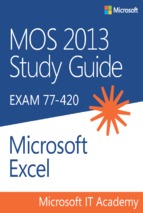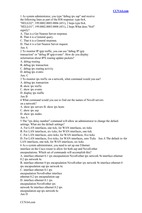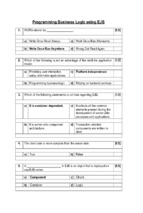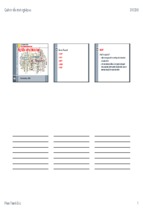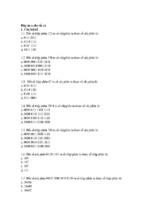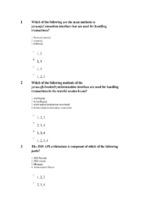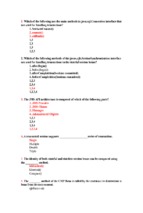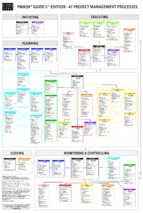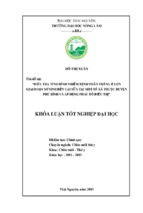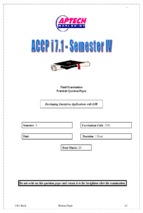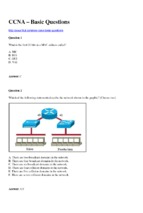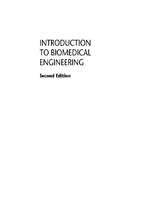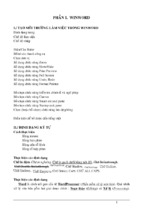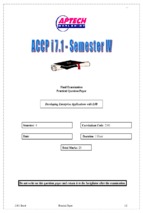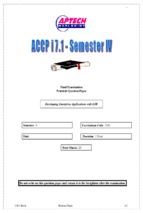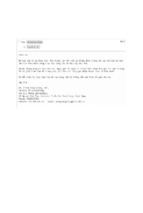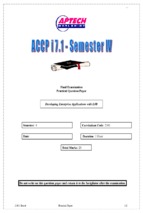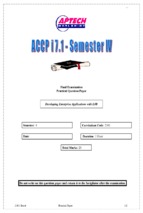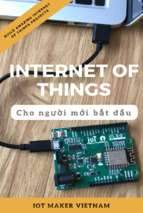Enderle / Introduction to Biomedical Engineering 2nd ed. Final Proof 5.2.2005 1:21pm page i
INTRODUCTION
TO BIOMEDICAL
ENGINEERING
Second Edition
Enderle / Introduction to Biomedical Engineering 2nd ed.
Final Proof
5.2.2005 1:21pm page ii
This is a volume in the
ACADEMIC PRESS SERIES IN BIOMEDICAL ENGINEERING
J O S E P H B R O N Z I N O , SE R I E S E D I T O R
Trinity College—Hartford, Connecticut
Enderle / Introduction to Biomedical Engineering 2nd ed. Final Proof
5.2.2005 1:21pm page iii
INTRODUCTION
TO BIOMEDICAL
ENGINEERING
Second Edition
John D. Enderle
University of Connecticut
Storrs, Connecticut
Susan M. Blanchard
Florida Gulf Coast University
Fort Myers, Florida
Joseph D. Bronzino
Trinity College
Hartford, Connecticut
Amsterdam Boston Heidelberg London New York Oxford
Paris San Diego San Francisco Singapore Sydney Tokyo
Enderle / Introduction to Biomedical Engineering 2nd ed.
Final Proof
5.2.2005 1:21pm page iv
Elsevier Academic Press
30 Corporate Drive, Suite 400, Burlington, MA 01803, USA
525 B Street, Suite 1900, San Diego, California 92101-4495, USA
84 Theobald’s Road, London WC1X 8RR, UK
This book is printed on acid-free paper.
Copyright ß 2005, Elsevier Inc. All rights reserved.
No part of this publication may be reproduced or transmitted in any form or by any means, electronic or
mechanical, including photocopy, recording, or any information storage and retrieval system, without
permission in writing from the publisher.
Permissions may be sought directly from Elsevier’s Science & Technology Rights Department in Oxford,
UK: phone: (+44) 1865 843830, fax: (+44) 1865 853333, e-mail:
[email protected]. You may
also complete your request on-line via the Elsevier homepage (http://elsevier.com), by selecting ‘‘Customer
Support’’ and then ‘‘Obtaining Permissions.’’
Library of Congress Cataloging-in-Publication Data
Introduction to biomedical engineering / edited by John D. Enderle, Joseph
D. Bronzino, and Susan M. Blanchard. —2nd ed.
p. ;cm.
Includes biographical references and index.
ISBN 0-12-238662-0
1. Biomedical engineering.
[DNLM: 1. Biomedical Engineering. QT 36 I615 2005] I. Enderle, John D.
( John Denis) II. Bronzino, Joseph D., III. Blanchard, Susam M.
R856.I47 2005
610’.28—dc22
2004030223
British Library Cataloguing in Publication Data
A catalogue record for this book is available from the British Library
ISBN: 0-12-238662-0
For all information on all Elsevier Academic Press publications visit our Web site at www.books.elsevier.com
Printed in the United States of America
05 06 07 08 09 10 9 8 7 6 5 4 3 2 1
Enderle / Introduction to Biomedical Engineering 2nd ed. Final Proof 5.2.2005 1:21pm page v
This book is dedicated to our families
Enderle / Introduction to Biomedical Engineering 2nd ed.
Final Proof
5.2.2005 1:21pm page vi
Enderle / Introduction to Biomedical Engineering 2nd ed. Final Proof
5.2.2005 1:21pm page vii
CONTENTS
PREFACE xiii
CONTRIBUTORS TO THE FIRST EDITION xv
CONTRIBUTORS TO THE SECOND EDITION xix
1
BIOMEDICAL ENGINEERING:
A HISTORICAL PERSPECTIVE 1
1.1 Evolution of the Modern Health Care System 2
1.2 The Modern Health Care System 10
1.3 What Is Biomedical Engineering? 17
1.4 Roles Played by Biomedical Engineers 23
1.5 Professional Status of Biomedical Engineering 24
1.6 Professional Societies 26
Exercises 28
References and Suggested Reading 29
2
MORAL AND ETHICAL ISSUES
2.1
31
Morality and Ethics: A Definition of Terms
33
vii
Enderle / Introduction to Biomedical Engineering 2nd ed. Final Proof 5.2.2005 1:21pm page viii
viii
CONTENTS
2.2
Two Moral Norms: Beneficence and Nonmaleficence 40
2.3
Redefining Death 41
2.4
The Terminally Ill Patient and Euthanasia 45
2.5
Taking Control 49
2.6
Human Experimentation 49
2.7
Definition and Purpose of Experimentation 51
2.8
Informed Consent 53
2.9
Regulation of Medical Device Innovation 59
2.10 Marketing Medical Devices 61
2.11 Ethical Issues in Feasibility Studies 63
2.12 Ethical Issues in Emergency Use 65
2.13 Ethical Issues in Treatment Use 68
2.14 The Role of the Biomedical Engineer in the FDA Process 69
Exercises 70
Suggested Reading 71
3
ANATOMY AND PHYSIOLOGY
73
3.1 Introduction 74
3.2 Cellular Organization 76
3.3 Tissues 92
3.4 Major Organ Systems 94
3.5 Homeostasis 119
Exercises 121
Suggested Reading 125
4
BIOMECHANICS
127
4.1 Introduction 128
4.2 Basic Mechanics 131
4.3 Mechanics of Materials 151
4.4 Viscoelastic Properties 159
4.5 Cartilage, Ligament, Tendon, and Muscle
4.6 Clinical Gait Analysis 169
4.7 Cardiovascular Dynamics 186
Exercises 207
Suggested Reading 209
5
REHABILITATION ENGINEERING AND
ASSISTIVE TECHNOLOGY 211
5.1
Introduction
212
163
Enderle / Introduction to Biomedical Engineering 2nd ed. Final Proof 5.2.2005
1:21pm page ix
ix
CONTENTS
5.2 The Human Component 218
5.3 Principles of Assistive Technology Assessment 224
5.4 Principles of Rehabilitation Engineering 227
5.5 Practice of Rehabilitation Engineering and Assistive Technology
Exercises 243
Suggested Reading 252
6
BIOMATERIALS
255
6.1
6.2
6.3
6.4
6.5
6.6
6.7
Materials in Medicine: From Prosthetics to Regeneration 256
Biomaterials: Properties, Types, and Applications 258
Lessons from Nature on Biomaterial Design and Selection 276
Tissue–Biomaterial Interactions 281
Guiding Tissue Repair with Bio-Inspired Biomaterials 290
Safety Testing and Regulation of Biomaterials 296
Application-Specific Strategies for the Design and Selection of
Biomaterials 301
Exercises 310
Suggested Reading 311
7
TISSUE ENGINEERING
313
7.1
7.2
7.3
7.4
7.5
7.6
What Is Tissue Engineering? 314
Biological Considerations 331
Physical Considerations 360
Scaling Up 382
Implementation of Tissue Engineered Products 386
Future Directions: Functional Tissue Engineering and the
‘‘-Omics’’ Sciences 390
7.7 Conclusions 393
7.8 Glossary 393
Exercises 395
Suggested Reading 400
8
BIOINSTRUMENTATION
8.1
8.2
8.3
8.4
8.5
8.6
403
Introduction 404
Basic Bioinstrumentation System 407
Charge, Current, Voltage, Power, and Energy
Resistance 415
Linear Network Analysis 425
Linearity and Superposition 432
408
239
Enderle / Introduction to Biomedical Engineering 2nd ed. Final Proof 5.2.2005 1:21pm page x
x
CONTENTS
´
8.7
Thevenin’s Theorem 436
8.8
Inductors 439
8.9
Capacitors 442
8.10 A General Approach to Solving Circuits Involving
Resistors, Capacitors, and Inductors 446
8.11 Operational Amplifiers 455
8.12 Time-Varying Signals 468
8.13 Active Analog Filters 474
8.14 Bioinstrumentation Design 484
Exercises 487
Suggested Reading 504
9
BIOMEDICAL SENSORS
505
9.1 Introduction 506
9.2 Biopotential Measurements 508
9.3 Physical Measurements 513
9.4 Blood Gases and pH Sensors 527
9.5 Bioanalytical Sensors 536
9.6 Optical Biosensors 539
Exercises 545
Suggested Reading 548
10
BIOSIGNAL PROCESSING
549
10.1 Introduction 550
10.2 Physiological Origins of Biosignals 551
10.3 Characteristics of Biosignals 554
10.4 Signal Acquisition 557
10.5 Frequency Domain Representation of Biological Signals 562
10.6 Linear Systems 584
10.7 Signal Averaging 597
10.8 Wavelet Transform and Short-Time Fourier Transform 605
10.9 Artificial Intelligence Techniques 612
Exercises 619
Suggested Reading 624
11
BIOELECTRIC PHENOMENA
11.1
11.2
Introduction 628
History 629
627
Enderle / Introduction to Biomedical Engineering 2nd ed. Final Proof 5.2.2005
1:21pm page xi
xi
CONTENTS
11.3 Neurons 637
11.4 Basic Biophysics Tools and Relationships 642
11.5 Equivalent Circuit Model for the Cell Membrane 653
11.6 Hodgkin–Huxley Model of the Action Potential 664
11.7 Model of the Whole Neuron 680
Exercises 684
Suggested Reading 690
12
PHYSIOLOGICAL MODELING 693
12.1
Introduction 694
12.2
Compartmental Modeling 698
12.3
An Overview of the Fast Eye Movement System 723
12.4
Westheimer Saccadic Eye Movement Model 728
12.5
The Saccade Controller 735
12.6
Development of an Oculomotor Muscle Model 738
12.7
A Linear Muscle Model 751
12.8
A Linear Homeomorphic Saccadic Eye Movement Model 757
12.9
A Truer Linear Homeomorphic Saccadic Eye Movement Model 763
12.10 System Identification 773
Exercises 788
Suggested Reading 797
13
GENOMICS AND BIOINFORMATICS
799
13.1 Introduction 800
13.2 Core Laboratory Technologies 804
13.3 Core Bioinformatics Technologies 812
13.4 Conclusion 828
Exercises 829
Suggested Reading 830
14
COMPUTATIONAL CELL BIOLOGY AND COMPLEXITY
14.1 Computational Biology 834
14.2 The Modeling Process 835
14.3 Bionetworks 846
14.4 Introduction to Complexity Theory
Exercises 852
Suggested Readings 854
849
833
Enderle / Introduction to Biomedical Engineering 2nd ed.
Final Proof
xii
15
CONTENTS
RADIATION IMAGING
857
15.1 Introduction 858
15.2 Emission Imaging Systems 859
15.3 Instrumentation and Imaging Devices
15.4 Radiographic Imaging Systems 882
Exercises 902
Suggested Reading 904
16
5.2.2005 1:21pm page xii
MEDICAL IMAGING
876
905
16.1 Introduction 906
16.2 Diagnostic Ultrasound Imaging 908
16.3 Magnetic Resonance Imaging (MRI) 940
16.4 Comparison of Imaging Modes 969
Exercises 972
Suggested Reading 975
17
BIOMEDICAL OPTICS AND LASERS
977
17.1 Introduction to Essential Optical Principles 979
17.2 Fundamentals of Light Propagation in Biological Tissue 985
17.3 Physical Interaction of Light and Physical Sensing 997
17.4 Biochemical Measurement Techniques Using Light 1006
17.5 Fundamentals of Photothermal Therapeutic Effects of Lasers 1015
17.6 Fiber Optics and Waveguides in Medicine 1026
17.7 Biomedical Optical Imaging 1033
Exercises 1039
Suggested Reading 1042
Appendix 1045
Index 1085
Enderle / Introduction to Biomedical Engineering 2nd ed.
Final Proof
5.2.2005 1:21pm page xiii
PREFACE
The purpose of the second edition remains the same as the first edition: that is, to
serve as an introduction to and overview of the field of biomedical engineering. Many
chapters have undergone major revision from the previous edition with new endof-chapter problems added. Some chapters were combined and some chapters
were eliminated completely, with several new chapters added to reflect changes
in the field.
Over the past fifty years, as the discipline of biomedical engineering has evolved, it
has become clear that it is a diverse, seemingly all-encompassing field that includes
such areas as bioelectric phenomena, bioinformatics, biomaterials, biomechanics,
bioinstrumentation, biosensors, biosignal processing, biotechnology, computational
biology and complexity, genomics, medical imaging, optics and lasers, radiation
imaging, rehabilitation engineering, tissue engineering, and moral and ethical issues.
Although it is not possible to cover all of the biomedical engineering domains in this
textbook, we have made an effort to focus on most of the major fields of activity in
which biomedical engineers are engaged.
The text is written primarily for engineering students who have completed differential equations and a basic course in statics. Students in their sophomore year or
junior year should be adequately prepared for this textbook. Students in the biological
sciences, including those in the fields of medicine and nursing, can also read and
understand this material if they have the appropriate mathematical background.
Although we do attempt to be fairly rigorous with our discussions and proofs, our
ultimate aim is to help students grasp the nature of biomedical engineering. Therefore, we have compromised when necessary and have occasionally used less rigorous
mathematics in order to be more understandable. A liberal use of illustrative examples
amplifies concepts and develops problem-solving skills. Throughout the text,
MATLAB1 (a matrix equation solver) and SIMULINK1 (an extension to MATLAB1
xiii
Enderle / Introduction to Biomedical Engineering 2nd ed.
Final Proof
xiv
5.2.2005 1:21pm page xiv
PREFACE
for simulating dynamic systems) are used as computer tools to assist with problem
solving. The Appendix provides the necessary background to use MATLAB1 and
SIMULINK1. MATLAB1 and SIMULINK1 are available from:
The Mathworks, Inc.
24 Prime Park Way
Natick, Massachusetts 01760
Phone: (508) 647-7000
Email:
[email protected]
WWW: http://www.mathworks.com {extend}
Chapters are written to provide some historical perspective of the major developments in a specific biomedical engineering domain as well as the fundamental principles that underlie biomedical engineering design, analysis, and modeling procedures
in that domain. In addition, examples of some of the problems encountered, as well as
the techniques used to solve them, are provided. Selected problems, ranging from
simple to difficult, are presented at the end of each chapter in the same general order
as covered in the text.
The material in this textbook has been designed for a one-semester, two-semester,
or three-quarter sequence depending on the needs and interests of the instructor.
Chapter 1 provides necessary background to understand the history and appreciate
the field of biomedical engineering. Chapter 2 presents the vitally important chapter
on biomedically-based morals and ethics. Basic anatomy and physiology are provided
in Chapter 3. Chapters 4-10 provide the basic core biomedical engineering areas:
biomechanics, rehabilitation engineering, biomaterials, tissue engineering, bioinstrumentation, biosensors, and biosignal processing. To assist instructors in planning the
sequence of material they may wish to emphasize, it is suggested that the chapters on
bioinstrumentation, biosensors, and biosignal processing should be covered together
as they are interdependent on each other. The remainder of the textbook presents
material on biomedical technology (Chapters 12-17).
A website is available at http://intro-bme-book.bme.uconn.edu/ that provides an
errata and extra material.
ACKNOWLEDGEMENTS
Many people have helped us in writing this textbook. Well deserved credit is due to
the many contributors who provided chapters and worked under a very tight timeline.
Special thanks go to our publisher, Elsevier, especially for the tireless work of the
editors, Christine Minihane and Shoshanna Grossman. In addition, we appreciate the
work of Karen Forster, the project manager, and Kristin Macek, who supervised the
production process.
A great debt of gratitude is extended to Joel Claypool, the editor of the first edition
of the book and Diane Grossman from Academic Press. From an initial conversation
over coffee in Amsterdam in 1996 to publication in 2000 required a huge effort.
Enderle / Introduction to Biomedical Engineering 2nd ed. Final Proof 5.2.2005
1:21pm page xv
CONTRIBUTORS TO THE
FIRST EDITION
Susan M. Blanchard
Florida Gulf Coast University
Fort Myers, Florida
Joseph D. Bronzino
Trinity College
Hartford, Connecticut
Stanley A. Brown
Food and Drug Administration
Gaithersburg, Maryland
´
Gerard Cote
Texas A&M University
College Station, Texas
Roy B. Davis III
Shriners Hospital for Children
Greenville, South Carolina
John D. Enderle
University of Connecticut
Storrs Connecticut
xv
Enderle / Introduction to Biomedical Engineering 2nd ed.
Final Proof
xvi
5.2.2005 1:21pm page xvi
CONTRIBUTORS TO THE FIRST EDITION
Robert J. Fisher
University of Massachusetts
Amherst, Massachusetts
Carol Lucas
University of North Carolina
Chapel Hill, North Carolina
Amanda Marley
North Carolina State University
Raleigh, North Carolina
Yitzhak Mendelson
Worcester Polytechnic Institute
Worcester, Massachusetts
Katharine Merritt
Food and Drug Administration
Gaithersburg, Maryland
H. Troy Nagle
North Carolina State University
Raleigh, North Carolina
Joseph Palladino
Trinity College
Hartford, Connecticut
Bernhard Palsson
University of California at San Diego
San Diego, California
Sohi Rastegar
National Science Foundation
Arlington, Virginia
Daniel Schneck
Virginia Polytechnic Institute & State University
Blacksburg, Virginia
Kirk K Shung
Pennsylvania State University
University Park, Pennsylvania
Anne-Marie Stomp
North Carolina State University
Raleigh, North Carolina
Andrew Szeto
San Diego State University
San Diego, California
Enderle / Introduction to Biomedical Engineering 2nd ed. Final Proof
CONTRIBUTORS TO THE FIRST EDITION
LiHong Wang
Texas A&M University
College Station, Texas
Steven Wright
Texas A&M University
College Station, Texas
Melanie T. Young
North Carolina State University
Raleigh, North Carolina
5.2.2005 1:21pm page xvii
xvii
Enderle / Introduction to Biomedical Engineering 2nd ed. Final Proof 5.2.2005 1:21pm page xviii
Enderle / Introduction to Biomedical Engineering 2nd ed. Final Proof 5.2.2005
1:21pm page xix
CONTRIBUTORS TO THE
SECOND EDITION
Susan M. Blanchard
Florida Gulf Coast University
Fort Myers, Florida
Joseph D. Bronzino
Trinity College
Hartford, Connecticut
Stanley A. Brown
Food and Drug Administration
Gaithersburg, Maryland
´
Gerard Cote
Texas A&M University
College Station, Texas
Charles Coward
Drexel University
Philadelphia, Pennsylvania
Roy B. Davis
Shriners Hospital for Children
Greenville, South Carolina
xix
Enderle / Introduction to Biomedical Engineering 2nd ed. Final Proof 5.2.2005 1:21pm page xx
xx
CONTRIBUTORS TO THE SECOND EDITION
Robert Dennis
University of North Carolina
Chapel Hill, North Carolina
John D. Enderle
University of Connecticut
Storrs, Connecticut
´
Monty Escabı
University of Connecticut
Storrs, Connecticut
R.J. Fisher
University of Massachusetts
Amherst, Massachusetts
Liisa Kuhn
University of Connecticut Health Center
Farmington, Connecticut
Carol Lucas
University of North Carolina
Chapel Hill, North Carolina
Jeffrey Mac Donald
University of North Carolina
Chapel Hill, North Carolina
Amanda Marley
North Carolina State University
Raleigh, North Carolina
Randall McClelland
University of North Carolina
Chapel Hill, North Carolina
Yitzhak Mendelson
Worcester Polytechnic Institute
Worcester, Massachusetts
Katharine Merritt
Food and Drug Administration
Gaithersburg, Maryland
Spencer Muse
North Carolina State University
Raleigh, North Carolina
H. Troy Nagle
North Carolina State University
Raleigh, North Carolina


